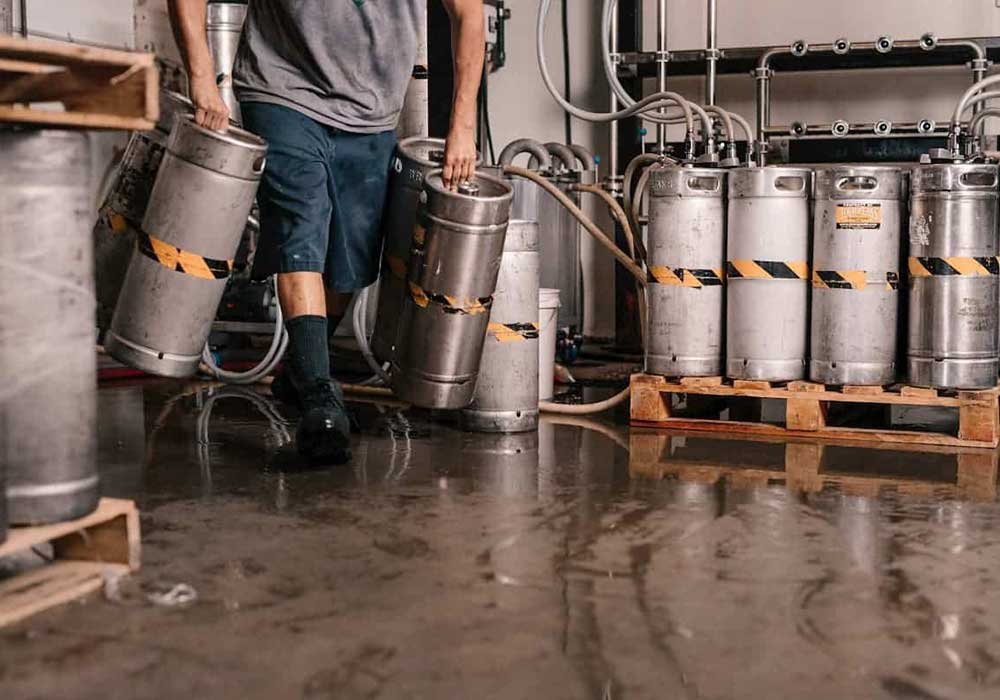Pest control in Breweries

Julie Baggett
Master Brewers Certification (Uc Davis Class Of 1996), Bs Biology Minor Chemistry (Uwg 1993)
Julie Baggett is an experienced brew consultant with a demonstrated history of working in the food & beverages industry. Skilled in Cleaning & Sanitation, Sensory Evaluation, Beverage Industry, and Alcoholic Beverages. She is a strong consulting professional with a Certification focused on Master Brewers from University of California, Davis. Brewing in India for over 5 years now and looking forward too many more, Julie adds “Indians are entrepreneurial in nature and much more successful than Americans, I think”.
In this issue of BW, she contributed on Pest control in India.
Pests cause millions of rupees annually in inventory loss. We have a moral duty to our veg and non veg customers to not serve them beer made from infested malt. But mainly it’s just good manufacturing practice in a food grade environment.
Layout of malt storage: all seams and corners should be caulked up to remove bug ingress. Eliminate as many flat surfaces where dust can collect, like shelving. Use plastic or good condition wood pallets. Any holes in room dime sized or bigger can be stuffed with steel wool. An air conditioner set below 20 deg C will help slow the reproductive cycle of these pests. Dedicate a thermometer/hygrometer to your malt storage wall. Heat and moisture are your enemy here. Have at least 15-20cm space between pallets and walls for inspection and vacuuming. If you have neem trees available, cut some branches with leaves to stick between layers of bags on a pallet, maybe 2 or 3 branches per pallet. Place glue traps under each pallet and the malt mill. Check daily.
Bugs as well as rodents can stick to these and indicate the beginning of an infestation. Dedicate a dry vac for malt and mill area and use after every milling and every 2-3 weeks in malt room. If you use adjuncts like corn, rice and oats, get smaller bags of 2-5 kgs instead of 25kg bulk sacks. These goods are the most likely vector for infestation.
If you are stuck with bulk sacks of adjunct or rice hulls, do not store with malt. Keep an especially close eye if you use bagged sugars or malt extracts for signs of infestation. Any open bags of anything going into your beer should be wrapped in clingfilm. Pests will go for the most available food sources, don’t give them an easy meal. So, by limiting their access, you limit your infestation.
Rodents: my most effective trap is a glue trap with a slice of nutty caramel chocolate bar in the middle. Check malt storage for rodent trails and bag chewing. Use a UV light weekly. These trails will fluoresce. I was lucky enough to have a mama kitty with 3 babies to take up residence in my utility room and keep most rodents at bay.
Flour beetles: I have had more inventory destroyed by these bugs than anything else and must take quick action to isolate and eliminate these pests. If you find them in a glue trap and the number increases 5-fold within a week, it’s time to do a malt inspection/deep vacuum.
If you have 100 bags or less, pull all malt sacks from room and vacuum. Inspect malt sacks by smacking bags on a floor to agitate any bugs to come out through the stitching. Mark these bags and set aside for closer inspection. Put all clean bags back in malt room and open suspicious bags. With a hand full of malt, insect infestation will be obvious. With 100+ bags of malt, emptying malt storage might not be feasible. In this case, one must be able to identify whether it’s a confused flour beetle or a red flour beetle. This is important because while the confused flour beetle does not fly, the red flour beetle is capable of strong flight and can result in a more widespread infestation. The difference is their antennae. A 20x magnifying glass should be good for this. For confused flour beetles, it may involve just one pallet if caught early. For red flour beetles, remove affected pallet and all surrounding pallets for infestation check. Replace glue traps with new ones on any suspicious pallets and watch traps for further activity.
Indian meal moths: If you have paper malt sacks and see little holes drilled into them or holes in malt kernels, you might have a moth infestation. I use wall mounted moth pheromone traps and haven’t been troubled with an infestation in years.
If you have heavy moth activity, check your bag stitching for webbing and pupae. By the way, if you catch any beetles on your moth trap, they are probably red flour beetles and must be dealt with quickly.
Fruit flies: If you have fruit flies hovering around your drains, flush drains with hot bleach water. If you work with a bar/taproom, make the following trap. Take a plastic cup with a drop of dish soap and 30ml apple cider vinegar, fill cup halfway with water. Set it out of customer sight, near draft tower, sinks and garbage. Change out once a week.
If one is diligent in cleaning and inspection, poison free pest control is possible and one should never allow spraying or fogging around your raw materials and production areas. I have found upon questioning that most of these pest control people don’t even know what they are spraying. Big thanks to Lauhoff Grain Company for my awesome good manufacturing practices book and to Anheuser Busch for sending me for this weeklong course 22 years ago. This sort of thing is generally not taught in brewing school and has saved me much money and grief. If you don’t find bugs until you’re milling the grain and they’re crawling up the grain hopper, you’re in deep trouble. It is my hope to pass along this knowledge to prevent anyone from being in this situation.







